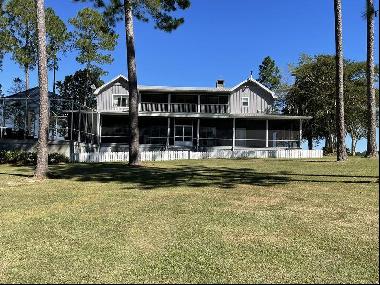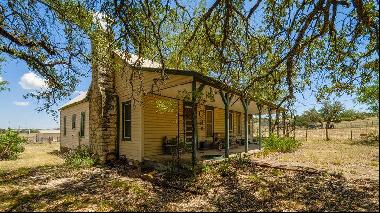The Benefits of Living in a Creative City
January 01, 2025 - United States

Dallas, Texas | Briggs Freeman Sotheby's International Realty
American urban planner and theorist Kevin Lynch observed in 1960 that the city should be “made by art, shaped for human purposes.” This credo has taken on different forms in the years since, but a perennial truth is that substantial cultural investment is an essential element of urban life around the globe. The notion is also backed by statistics about the growing importance of culture on society. According to data released in March 2024 by the National Endowment for the Arts and the Bureau of Economic Analysis, the economic impact of the arts and cultural industries in America, for example, “hit an all-time high in 2022, contributing 4.3% of GDP, or $1.1 trillion, to the U.S. economy.”
In major cities such as New York, “luxury residences have built up around cultural concepts such as public spaces, the arts, and restaurants,” according to Stan Ponte, senior global real estate advisor, Sotheby’s International Realty—East Side Manhattan Brokerage. For example, Manhattan apartments near the Lincoln Center for the Performing Arts, opened in the 1960s, remain in high demand, Ponte notes.
Likewise, the High Line, a once-abandoned elevated rail line in the Meatpacking District that was converted into a public park in 2006, studded with rotating sculptural installations by high-profile contemporary artists, “has resulted in one of the most sought-after neighborhoods, with residential prices reaching as high as $6,000 per square foot in 2024,” Ponte says. In comparison, the average price per square foot in Manhattan in 2024 is $1,500, according to Realtor.com. The High Line soon attracted other cultural institutions, such as the Whitney Museum of American Art, which moved into its Renzo Piano-designed building in 2015, and a flood of art galleries, restaurants and shops.

Manhattan, New York | Sotheby's International Realty – Downtown Manhattan Brokerage
Most intentionally established cultural districts “start from somewhere,” says Daniel Payne, managing principal, AEA Consulting, a company based in London and New York that set up the Global Cultural Districts Network in 2013. Payne says a respected institution often provides the anchor for a dynamic neighborhood, such as the Brooklyn Academy of Music in New York. Other public projects, such as Millennium Park in Chicago, Illinois, introduce a different dynamic that generates new real estate value. In Hong Kong, the arrival of the Art Basel fair and an influx of galleries show how “residential real estate moves to follow the creative dollar,” adds Payne.
May Teng, business development manager, List Sotheby’s International Realty, Hong Kong, says momentum in the city has been building as “blue-chip galleries open in landmark locations.” The West Kowloon Cultural District is already solidly on the map, with the M+ museum, which opened in 2021, and the new Hong Kong Palace Museum. Teng cites strong interest in the Harbourside towers in West Kowloon as an example of how proximity to a cultural and business hub drives up prices. During the first quarter of 2024, the building marked a record sale at over $13.5 million.

Dallas, Texas | Briggs Freeman Sotheby's International Realty
In Texas, the Dallas Arts District dates its foundation to 1984, when the Dallas Museum of Art opened its Edward Larrabee Barnes-designed building. Since then, more cultural facilities have joined the neighborhood—including the AT&T Performing Arts Center, which opened in 2009—and a number of luxury residential high-rises have followed suit, such as the Hall Arts Residences. That project has “pushed the height of luxury to new levels in the Dallas condominium market,” says Kyle Richards, real estate advisor, Briggs Freeman Sotheby’s International Realty, which exclusively represents the tower’s properties.
“It is also the first building in Dallas to achieve across-the-board sales at more than $1,100 per square foot, during phase one of the project,” he adds. “The recently unveiled Masterpiece Collection, on floors 20 through 25, is averaging more than $1,300 per square foot.” Comparatively, “the average sales price for all condominium sales activity in Dallas County is $300 per square foot,” Richards says. “That goes to show the importance of putting an emphasis on services, amenities and quality finishes in a superior location, such as the Dallas Arts District.”
As these locations show, cities shape their inhabitants, and vice versa. This reciprocity can reach its most dynamic potential when eager audiences have easy access to forward-thinking institutions, which in turn become part of the fabric of everyday life. That’s artful living, indeed.
Read the full version of this story in the 2024 Mid-Year Luxury Outlook Report
Tags:
blog, Sothebys, Living, Creative City





